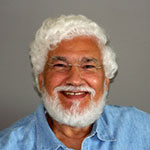March 23, 2019
The Never-ending fascination of Abu Simbel

Apart from the Great Pyramids of Giza, few monuments of ancient Egypt have captured the world's fascination like the two great Abu Simbel temples of Ramses II the Great and his beautiful wife, Queen Nefertari.
Every few years I join admirers of this iconic Pharaoh by visiting his temples and recently did so again, reliving the wonder once more.
The legendary attraction of these 3000-year-old structures stems from their architecture, location, and the histories of the king and queen who inspired their construction. But in modern times they have gained even greater prominence through the gargantuan international effort of the 1960s to save them from the rising waters of Lake Nasser, created as a reservoir behind the High Dam on the Nile south of Aswan in Upper Egypt.
Ramses II the Great was a nation-builder and protector of ancient Egypt from its enemies to the south in today’s Sudan, and to the northeast in what are now Syria and Palestine.
He is regarded as the noblest, most celebrated and most powerful Pharaoh of the New Kingdom and therefore came to be known as the “Great Ancestor.”
Ramses dedicated his vast temple primarily to the gods Amon-Ra of Thebes and Ra-Harakhte of Heliopolis, but it was also designed as a memorial to himself.
He chose a prominent site some 280 kilometers south of Aswan in the town of Abu Simbel, on the banks of the Nile where the structure would overlook the desert landscape with its brilliant façade, 32 meters high and 35 meters wide at the base. It took approximately 20 years (1264-1244 BCE) to build the entire complex.
Its façade is dominated by four gigantic and magnificent 20-meter-high statues of Ramses II, each in a sitting position with hands on knees, symbolizing Egypt’s status at the time as a regional super-power. Three of the four are intact, while one is missing most of the upper torso.
On the chest and upper arm of each imposing regal figure one can see cartouches bearing Ramses’ name. And on each of the statuesque foreheads, there is inscribed the sacred cobra of kingship, topped by the double crown of Upper and Lower Egypt.
Along with the statues of Ramses himself, the temple façade also includes the figures of the Pharaoh’s mother Queen Tuya, his favorite wife Queen Nefertari, and some of the 170 sons and daughters he fathered during a long reign of 67 years.
The inclusion of women on Abu Simbel’s enormous façade indicates the respect and reverence accorded to mothers and wives of royalty by the ancient Egyptians, as well as demonstrating the equality given to both sons and daughters. It is well known that ancient Egyptian beliefs upheld Queens as worthy representatives of the Divine.
Ramses II built another somewhat smaller temple nearby for his consort, Queen Nefertari, using the same architectural concept whereby the facade is decorated with two groups of statues separated by the gateway. The main statues, slightly more than 10 meters high, are of Ramses II and Nefertari. They are remarkable in ancient Egyptian sculpture for being equal in height. Traditionally, the statues of queens were never taller than the knees of the Pharaoh.
The saving of the two temples was an unprecedented model of international cooperation between Egypt and some 40 other countries, who worked together in response to an urgent UNESCO appeal by contributing funding, technical expertise and fieldwork.
Their task was formidable from the start, for the original temples were not simply built of quarried stone – they were excavated out of solid rock, from the side of a mountain.
It was a great engineering and logistical challenge, in which experts spent more than four years dividing the temples into some 1000 segments weighing from three to more than 20 tons. Then they created an artificial mountainside some 64 meters higher and almost at the same location. The entire project was completed in 1968 after almost five years; it involved about 3,000 workers and cost (in 1960s currency) about $42 million USD.
The original temple was aligned in such a way that on Ramses II’s birthday of February 21, and his coronation day of October 21, the first rays of the rising sun would move across the inner hall of the temple, illuminating the figure of Ra-Heorakhty, then Ramses II and then Amun. But Ptah, the god of evil located to the extreme left, was never supposed to be in the light.
Remarkably, the relocated temple continues this solar phenomenon, but one day later – another reason to be fascinated by the great legacy of a great Egyptian king.








